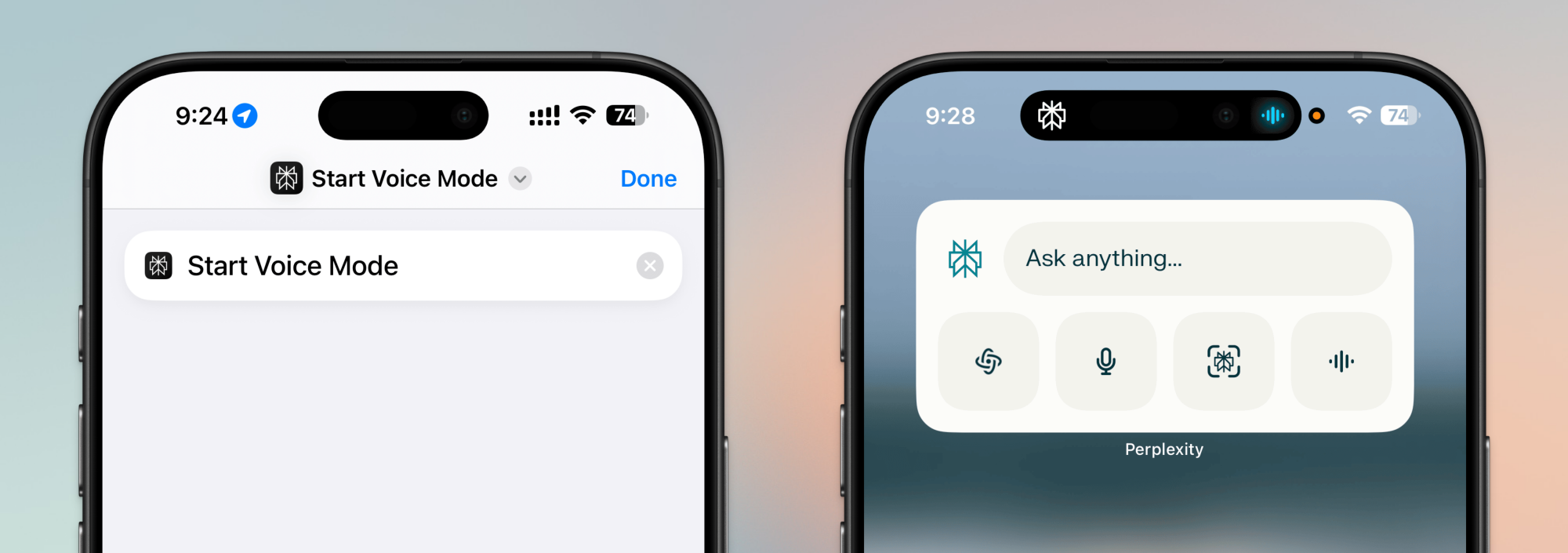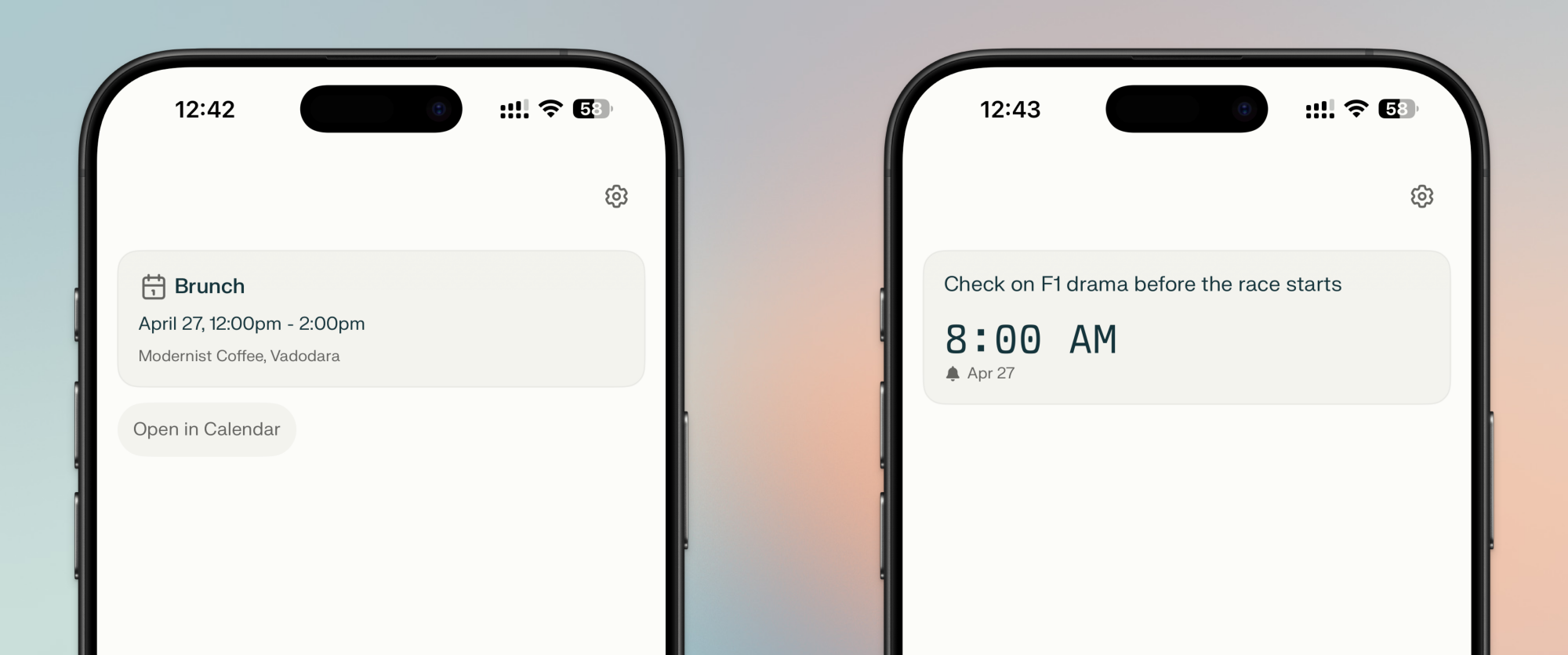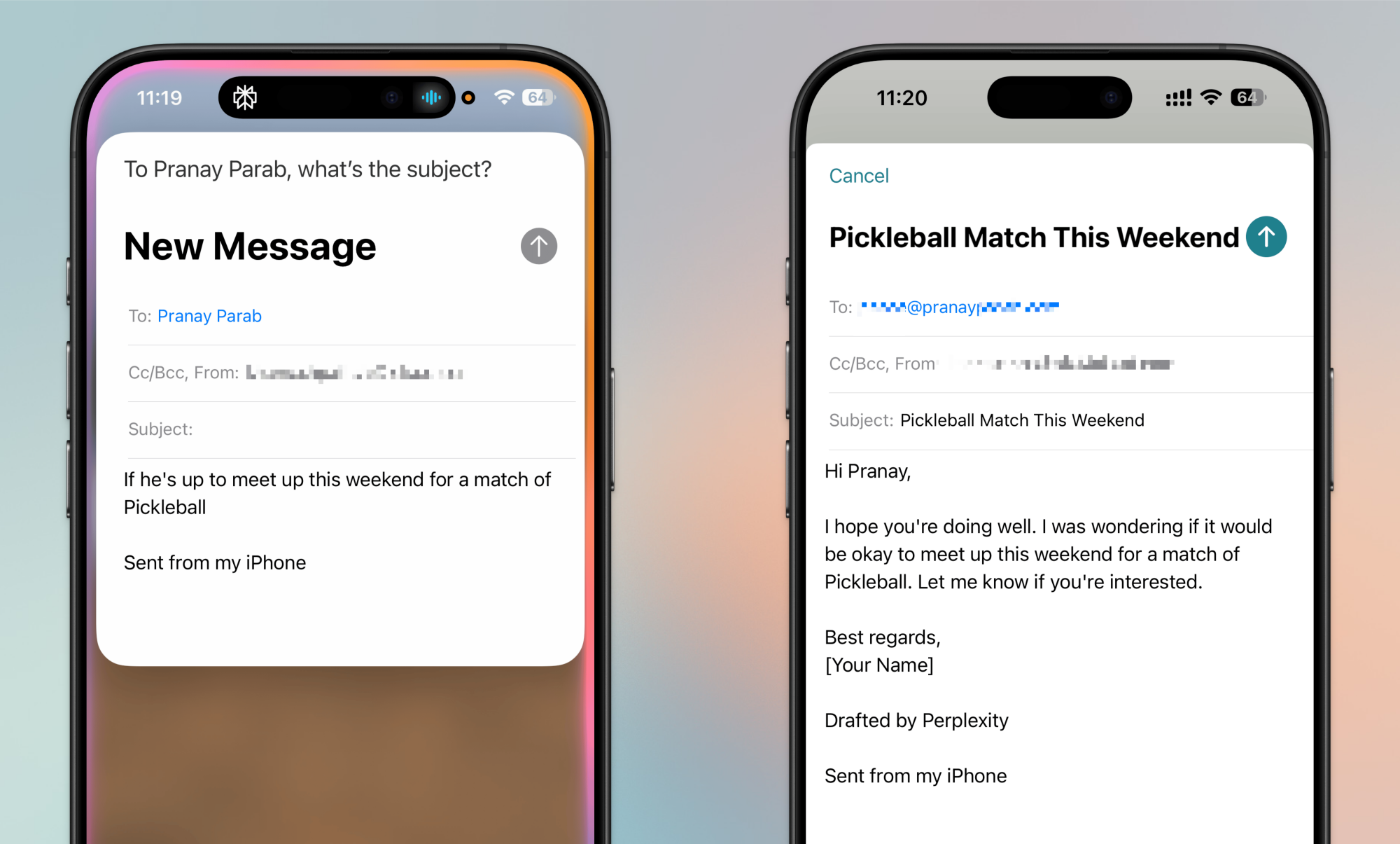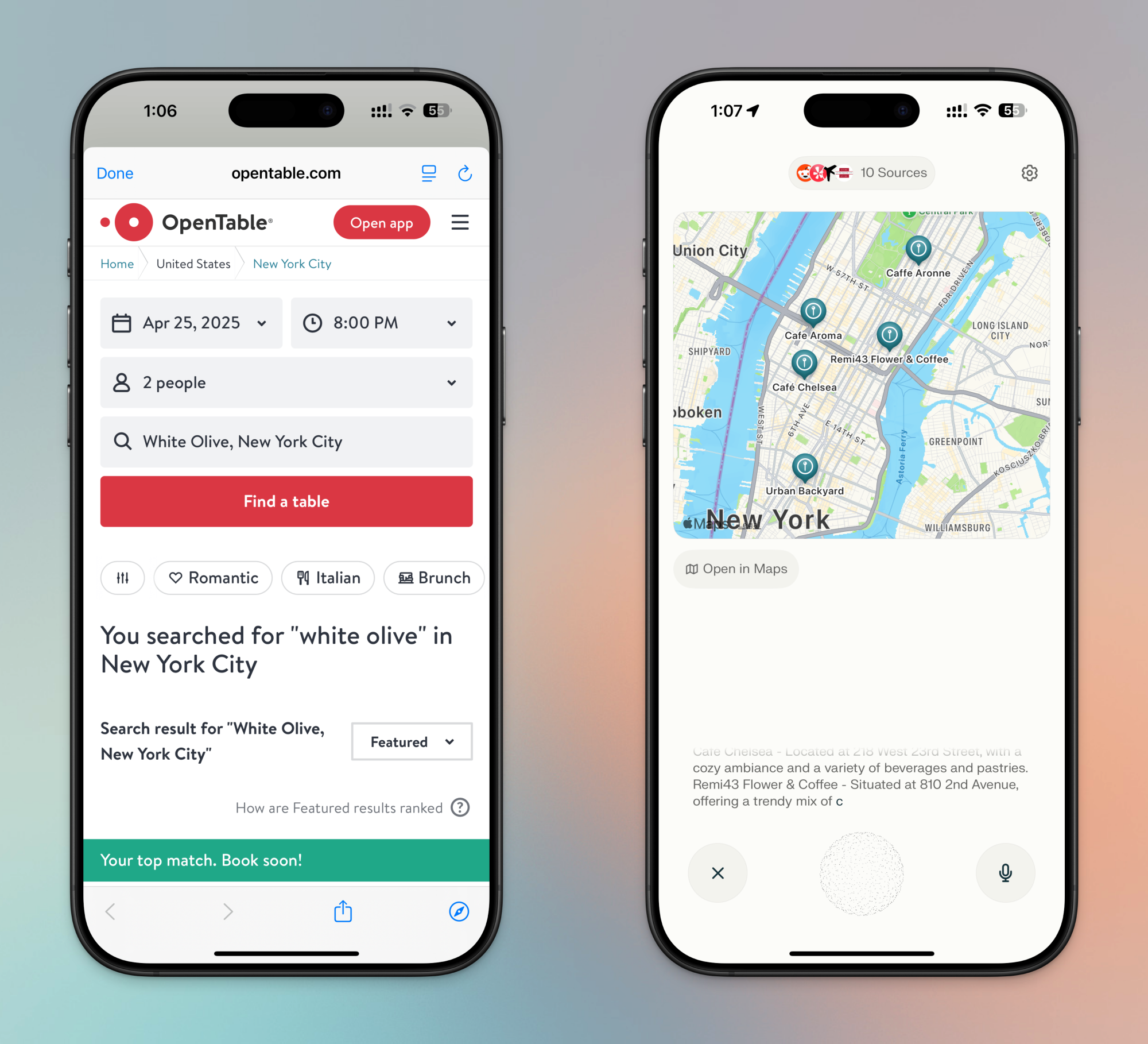Siri is struggling. It’s struggling to respond to simple questions or create simple calendar events. And the end still isn’t in sight, now that Apple has mostly delayed Apple Intelligence’s “smarter Siri” until the end of the year.
Meanwhile, Perplexity AI’s new Voice Assistant is here now, trying to capitalize on Apple’s mess. In addition to answering questions, the AI’s new Voice Mode is able to create calendar events and reminders, play music, and more. It can hold conversations, and even perform some web-based tasks. These are things that Siri just can’t do, at least not yet.
How to use Perplexity Voice Assistant on iOS
Download and open the latest version of the Perplexity app. In the Ask Anything bar, you’ll see an animated Waveform icon to the right. That’s the shortcut to the Voice Assistant.

Credit: Khamosh Pathak
Simply tap on it and start speaking. Perplexity will show an animation when you’re speaking, and when it’s responding to you. There’s also an option to Mute the microphone for longer chats.
This is more of a conversational space, so you can keep talking as Perplexity responds. Tap the Gear icon up top for settings. Here, you can disable the transcript feature, or enable a push to talk mode. You can also change the Assistant’s voice.
The Voice Mode works in the background, and only stops when you hit the X button in the app. So you can start the Voice Mode, switch to a different app, and continue talking to Perplexity in the background, if you wish.

Credit: Khamosh Pathak
For quicker access, you should add the Medium Perplexity widget to your home screen, since it has a shortcut to the Voice Mode. Alternately, you can create a shortcut and add it to your Home screen, Lock screen, Control Center, or even the Action button (to set that up, follow this guide.)
What Perplexity Does better than Siri
Perplexity integrates directly with Apple’s default apps like Calendar, Reminders, Mail, Contacts, and more. As long as you give it permission, Perplexity can add events to your calendar, remind you of something, and even draft emails and text messages.
As it stands, Perplexity also has a better knowledge base than Siri, as it’s connected to the web. So asking something like “when was the Pixel 4a launched” brings up an instant response, while asking Siri requires a confirmation via ChatGPT.
In my testing, I found Perplexity was reliable at creating calendar events and reminders, more than I often get with Siri.

Credit: Khamosh Pathak
Drafting an email shows a stark difference between the two approaches. I used the same prompt with both Siri and Perplexity: Draft an email asking Pranay if he’s up for a Pickleball match this weekend. Siri took this literally, and drafted an email saying “if he’s up for a Pickleball match this weekend.” That’s it. Perplexity, on the other hand, expanded this into a coherent sentence, added a Subject, and showed a compose box. All that was left for me to do was switch out my name and hit Send (Siri also doesn’t send an email without your confirmation).

Credit: Khamosh Pathak
My experience with text messaging was more iffy. Perplexity couldn’t just draft a message to Pranay, even though I gave it full access to my contacts (if you don’t want to do that, you can dictate the email address or the phone number instead). Hopefully, this is a day-one issue and gets sorted out later on.
Perplexity’s Voice Assistant can also play music directly from Apple Music, using voice commands. And because Perplexity integrates with YouTube, it’s quite quick when finding YouTube videos. I asked it to find a soothing video about the hidden art of ceramics in Japan, and in a couple of seconds, Perplexity started playing the video inside the app.
What Perplexity Does that Siri just can’t do
Perplexity’s Voice Assistant can converse with you with ease. There’s a very smooth back and forth, where the assistant remembers the details that you asked before, knows the context to your prompts, and replies accordingly. It simply doesn’t need to ask follow-up questions.

Credit: Khamosh Pathak
This is great for asking general questions, and for learning things. Instead of a 500 word response, Perplexity’s AI assistant will give you a couple of sentences and will prompt you to ask further, sometimes even giving you clues about what you might want to ask about next.
Perplexity can take actions on the web too, thought you have to be the one to take the final action, which is fair (and, honestly, appreciated).
For example, I asked Perplexity to book a table at White Olive at 8 PM in New York City, and it opened Open Table with all those details already filled in. I had to confirm the details, and finish the booking myself. Then, I asked if Perplexity can call me an Uber, and it opened the Uber app with the location of the White Olive restaurant mapped in.
These are the things that Siri with Apple Intelligence is supposed to be able to do for you, but we won’t see these features until at least the end of the year, and we have no idea how exactly they will work.
It’s the transparency and consistency that matters
In my limited hands-on testing, I noticed that Perplexity’s responses were more consistent than Siri’s, and since Voice Mode stays active by default, I asked nuanced questions without feeling like I need to hurry myself, like I do with Siri.
Siri is sometimes great, and sometimes it just doesn’t respond. Perplexity takes care of that issue. Of course, there were times with Perplexity ran into a wall, like with my text messaging question. Here too, it calmly told me it wasn’t able to accomplish the task, and that it could try again if I wanted. Hopefully, these small issues will get sorted out with more updates.
Of course, Perplexity can’t replace Siri in the true sense, because Apple won’t allow for it. Only Siri can access OS level features like changing toggles, settings, calling someone, replying to text messages, setting alarms, and so on. But for all the other things, if you’re feeling frustrated with the limitations of Siri, Perplexity’s Voice Assistant is definitely worth a try.





















